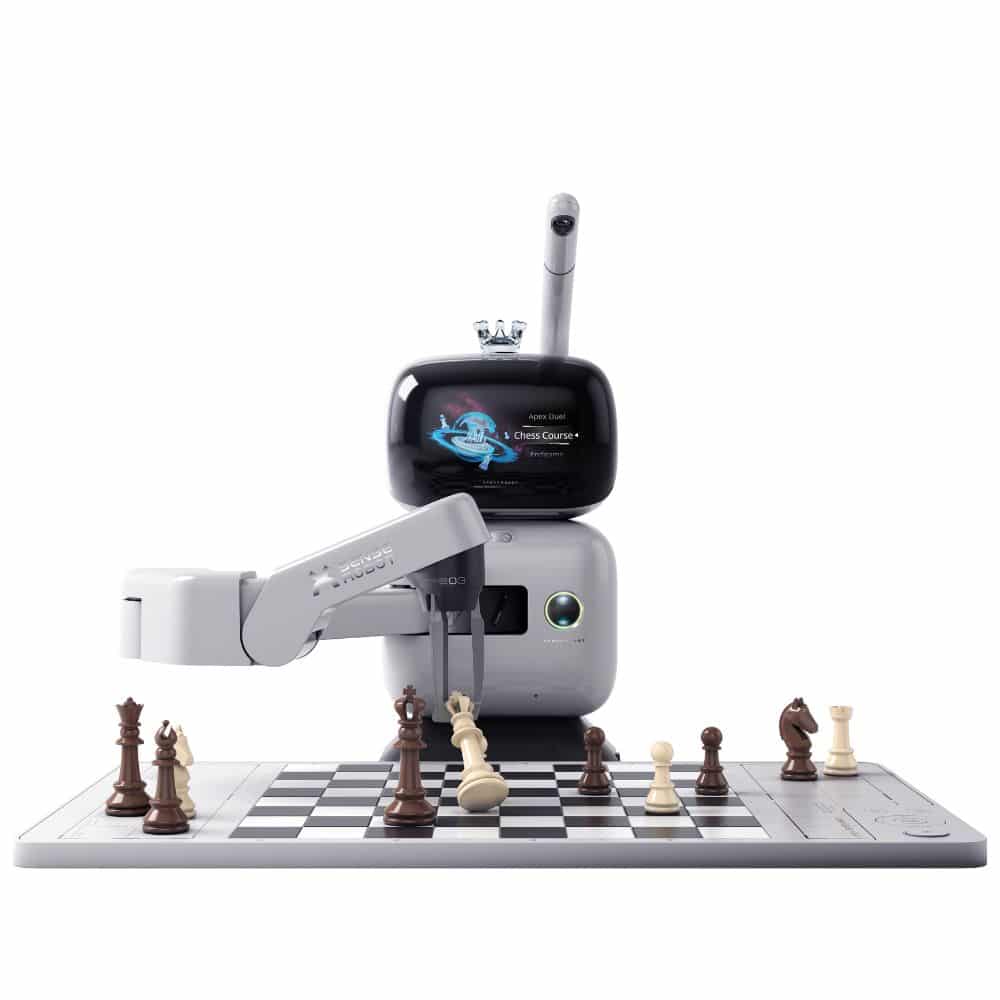SenseRobot Chess Review: A Smart Chess Opponent That Feels Human
As a parent of a young chess enthusiast, I’ve spent the past three years watching my son develop his skills and passion for the game. To support his learning, I previously purchased the Fermi Smart Chess, an AI-powered chessboard. While it offered some interactive features, my son always longed for a more realistic opponent—one that could play like a real person rather than just highlighting moves on a digital board.
One day, while shopping at a mall, we came across a free trial of SenseRobot Chess, a robotic AI chessboard currently featured on Indiegogo. My son eagerly gave it a try, and as I observed him playing, I realized this device had several impressive features that set it apart from other smart chessboards.




Table of Contents
Specification

Size: 475*450*320 mm
Weight: 4.2Kg including Board, Piece Boxes, 94 Pieces, and Power Adapter
Board Tray + Chess/Draughts Board
Three Degrees of Freedom, Air Pump
Game Camera * 2
[Chess]25 Levels(EOL200-2900)
[Draughts]Built-In 10 Levels
[Chess]145 Endgames in Six Groups
[Draughts]500 Endgames in Five Groups
Aluminum Alloy Inside, Plastic ABS Outside
WiFi 802.11 b/g/n/ac 2.4/5GHz
Why SenseRobot Chess Stands Out
1. A Screen-Free, Realistic Chess Experience
Although there are many apps and online platforms where kids can practice chess and compete against real opponents, I try to limit my son’s screen time, as he is already nearsighted. That’s why I was excited about SenseRobot—it provides a hands-on, interactive way for him to practice without staring at a screen.
The biggest advantage? It plays like a real person. Unlike other smart chessboards that just highlight moves digitally, SenseRobot physically moves the pieces, picks up captured pieces, and places new moves precisely—just like playing against a human opponent. This immersive, screen-free experience makes a big difference for young learners.
2. A Worthy Opponent at the Right Skill Level
For kids who have been playing chess for a few years, it’s crucial to compete against someone at a similar level. At home, my son doesn’t have that option—I can’t keep up with him, and no one else in the family plays at his skill level.
SenseRobot solves this issue by offering 25 adjustable AI difficulty levels, ranging from 200 to 2,900 ELO, allowing players to match with an opponent at their exact skill level. My son’s feedback? “This AI plays smart. It doesn’t make silly mistakes.” Unlike beginner-level AI in some chess apps, SenseRobot rarely blunders, making the matches much more engaging and realistic.
3. Fast Reactions & AI Learning Capabilities
One of the most impressive things about SenseRobot Chess is its quick decision-making. The robotic arm moves smoothly and reacts instantly. Watching my son play, I could see that the AI analyzes moves and responds without delay, making the game flow naturally.
Beyond just playing, the built-in AI learning features help improve chess skills. The system can analyze past games, provide insights, and even offer personalized training exercises, making it a powerful tool for kids looking to level up their chess game.
4. Higher Skill Ceiling for Long-Term Use
Compared to other smart chessboards like Fermi, SenseRobot offers a higher level of competition, making it suitable for advanced players as well. With 25 adjustable difficulty levels ranging from beginner to grandmaster, it can grow with the player. This means that as my son’s skills improve, SenseRobot remains a relevant and challenging opponent, ensuring long-term usability and value. For those truly passionate about chess, this makes SenseRobot a worthy investment.
5. Downsides: Space Requirements & Sensitivity Issues
While the SenseRobot Chess is a fantastic innovation, it does have a few minor drawbacks:
It Requires a Large Space: Due to the size of the robotic arm and chessboard, you need a dedicated area to use it comfortably. It’s not as compact as digital chessboards, so small desks might not be ideal.
It’s Sensitive to Piece Movement: My son noticed that the robot sometimes accidentally knocks over pieces while making its moves. However, it does recognize errors and corrects the board before continuing, which is a nice touch.
Conclusion
Despite its size and occasional sensitivity issues, SenseRobot Chess is the most realistic AI chess opponent we’ve encountered. It offers a screen-free, immersive experience that combines realistic gameplay, skill-matching AI, and interactive learning tools—all without the drawbacks of excessive screen time.
For kids who are serious about improving their chess skills, SenseRobot Chess is an excellent investment. It’s available on Indiegogo, making it a great opportunity for early adopters to get their hands on this next-generation chess training tool.
Would I buy one? If we had the space for it, absolutely!
